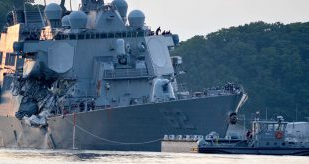A few years ago, I had the privilege of spending a few days learning about the US Navy’s training programs which included 24 hours on the USS Stennis, one of ten Nimitz class aircraft carriers. There is nothing like sitting on the deck of an aircraft carrier at 11 PM in total darkness and 10- foot seas watching F18’s land, only occasionally missing the cables and needing to quickly take off again. Few things take so much coordination, precision, and training.
I came away from the experience with complete awe for how effective and hands-on much of the training is for sailors whether managing the movement of over 60 airplanes on the flight deck or learning to cook for 5,000. Witnessing pilots’ carrier landing reviews (and the systems and processes underlying the reviews) reinforced my belief in the power of thoughtful, descriptive feedback. For more on these sorts of organizations sometimes called “High-Reliability Organizations” see this interesting Harvard Business Review Article here.

Given current navigational technology and the rigor by which the Navy trains sailors and pilots, I was puzzled how the Navy could have so had so many collisions in the last year (four in 2017). As a result of these accidents, there were a number of investigations along with congressional hearings. Not surprisingly, there have been all sorts of theories thrown out, including possible cyber attacks, but the most likely seems to be related to training.
There is a working theory by some in the Navy that the root cause of these collisions can be found in the ways the Navy trains ship-based officers.
It turns out, in 2003, the Navy made fundamental shifts in how basic navigation and ship handling is taught Rather than sending new officers to the Surface Warfare Division Officer School (SWOS DOC) for 6-14 months before being assigned to a ship, the Navy shifted to a new program that put untrained officers on ships with a box set of 21 CD’s.
The idea was that training could be done while on ship in between other assigned duties. It was thought sailors could learn more on the job. This process was seen as far more efficient than training sailors prior to arriving on ship.
One former Naval captain and officer trainer says “We do not put a premium on being good mariners,” Hoffman said. “We put a premium on being good inspection takers and admin weenies.”
Apparently, the Navy saved about $15 million annually by applying this “best business practice” and new technology. (The cost of one destroyer is $1.8 billion, the cost of one sailor’s life is immeasurable.)
This training sometimes referred to “Surface Warfare Officer School in a Box” was supposed to deliver better-trained soldiers, faster. Maybe not so much, if sailors were “credentialed” but lacked the basic navigational skills to a steer a ship and avoid collisions.
All of this got me thinking of K-12 education and how quick we reformers are to jump onto some new “innovation,” hoping it will lead to better outcomes for less money.
Don’t get me wrong; we desperately need innovation when fewer one in four of low-income students in Colorado cannot read by third grade. But we need to test innovations and make sure they are working before we push across any system.
The Navy training introspection made me think of our own “in a box” reforms that include virtual schools, credit recovery, for-profit charters and any number of new programs that claim all will reach competency in far shorter time than in traditional programs.
Research has shown that in spite of all of the promise that virtual schools do not work. And as more and more students are graduating from districts like Los Angeles but appear not to have learned what high school graduates are expected to know, there is a growing concern that credit recovery programs may not deliver.
It has taken the United States Navy 14 years to have a serious discussion on how to do officer training because of the deaths of 17 sailors and damaged billion-dollar ships. What will it take for K-12 to approach the equally serious question about how to solve the problem of millions of students not being able to read?

Colliding Naval vessels cost lives, damage to machinery and loss of prestige. Consider a nation with so many under-educated adults going through reforms that “cut costs” instead of delivering real results in their education levels. In my mind, the costs in life opportunities are unfathomable and go well beyond the billions in economic cost.